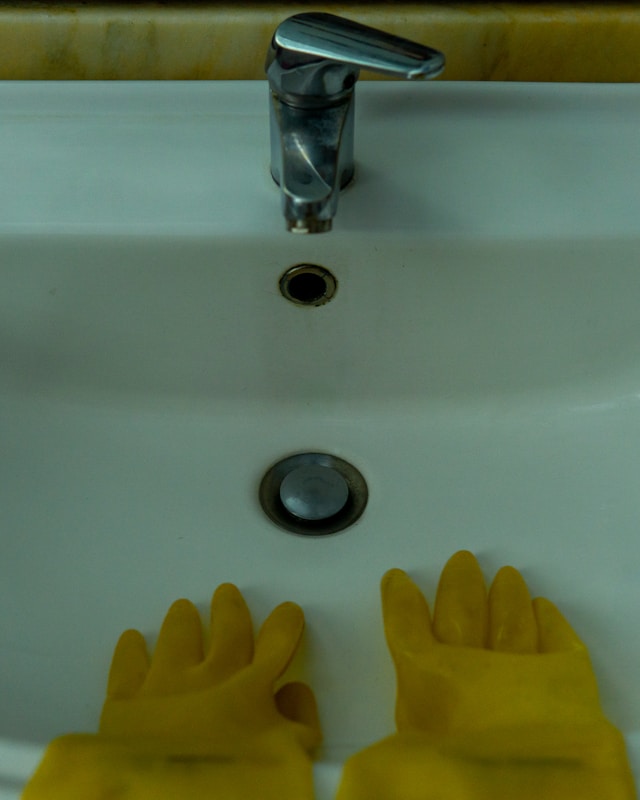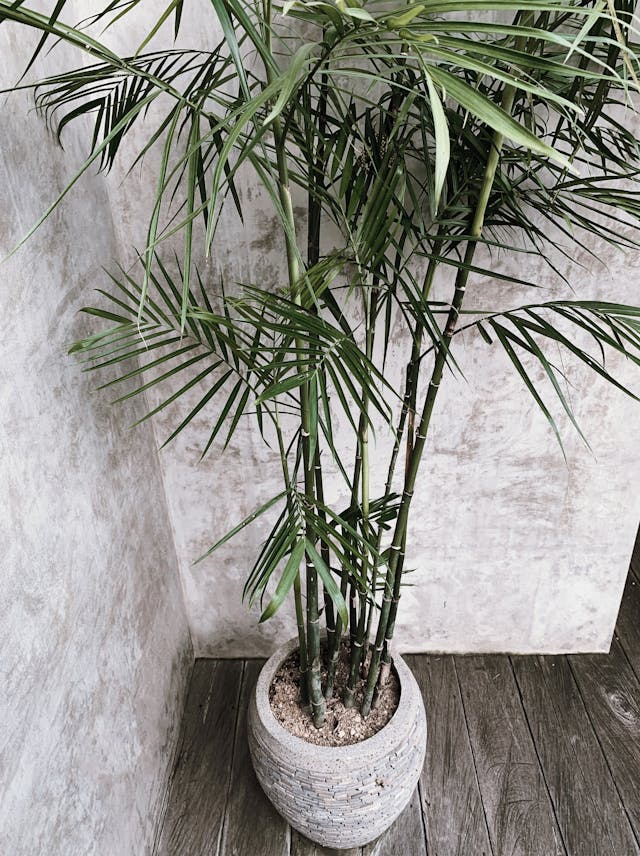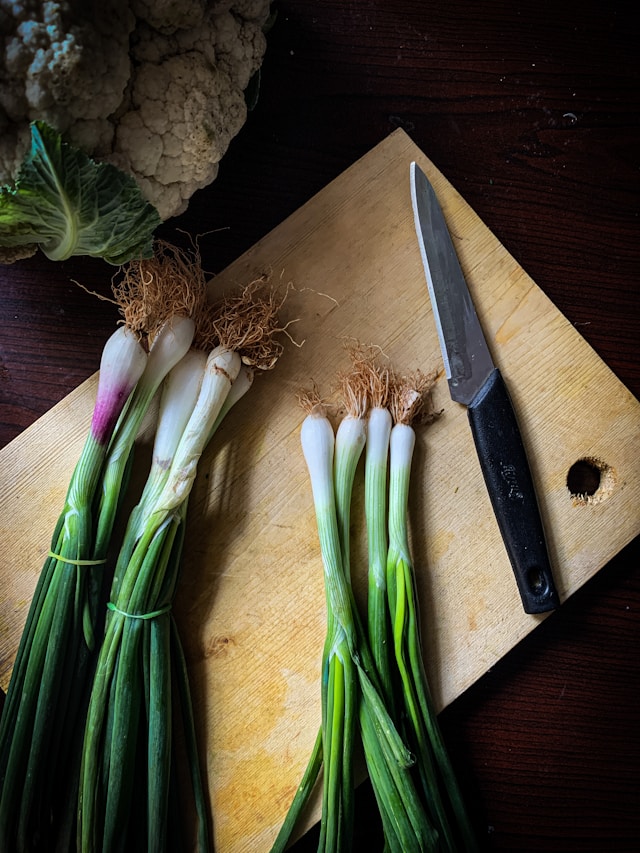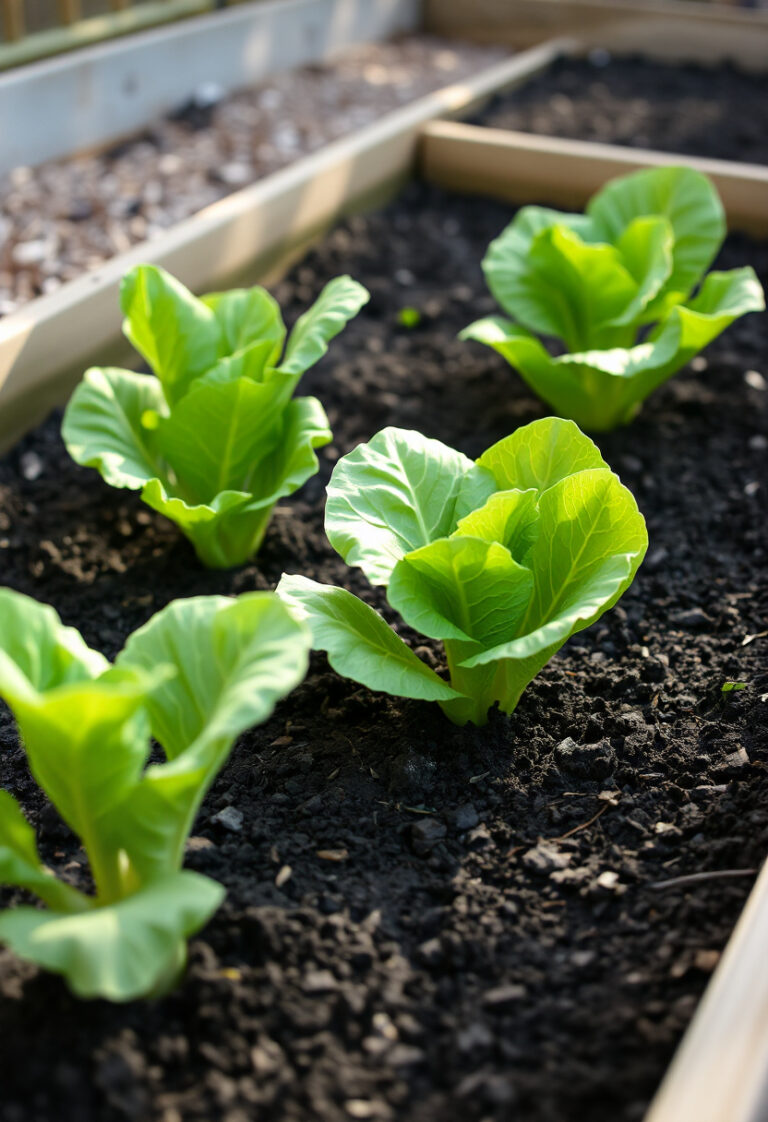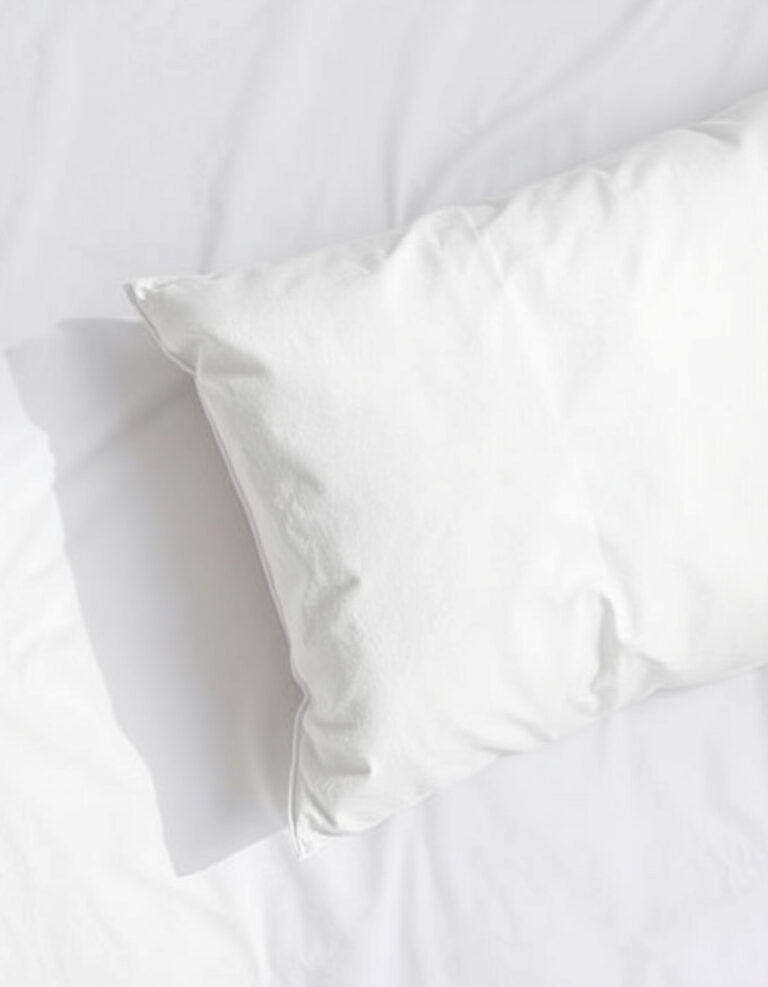Living in an apartment doesn’t mean you have to sacrifice the refreshing presence of plants. In fact, introducing apartment greenery can transform your space into a breathable, calming environment while improving air quality and enhancing your well-being. Whether you have a small studio or a spacious flat, there are numerous creative ways to incorporate nature into your home. This guide explores nine simple yet effective methods to add greenery to your apartment, regardless of your space constraints or plant care experience.
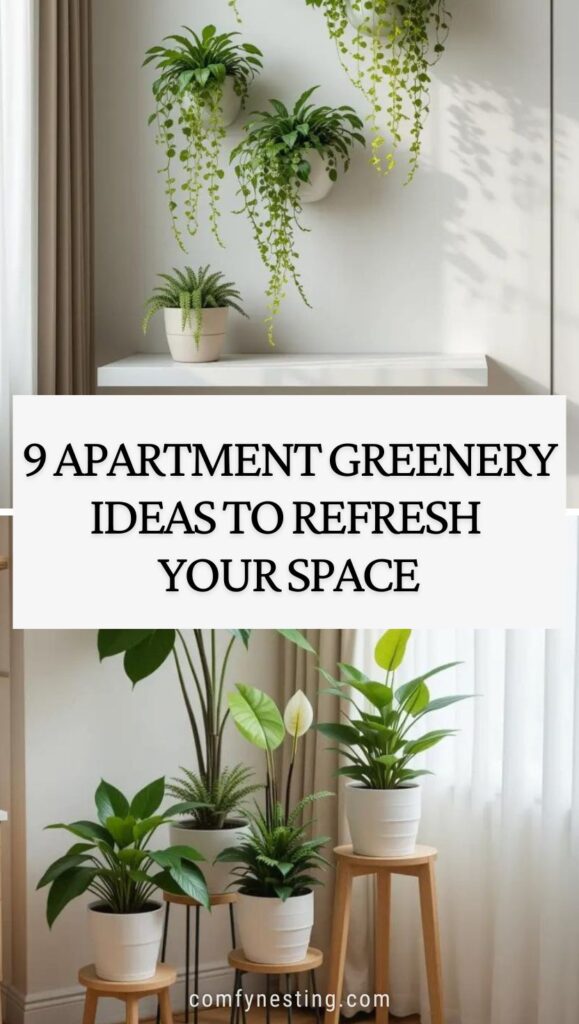
Why Apartment Greenery Matters
Before diving into the methods, it’s worth understanding why adding plants to your living space is beneficial. Indoor plants do more than just beautify your apartment – they purify the air by absorbing toxins and releasing oxygen. Studies have shown that being surrounded by greenery can reduce stress levels, enhance productivity, and improve overall mental health. Additionally, apartment greenery can add texture, color, and a sense of accomplishment to your home decor.
1. Window Sill Gardens: Maximize Natural Light Sources

Window sills offer prime real estate for apartment greenery, especially for plants that require abundant sunlight. Creating a window sill garden is an excellent starting point for apartment dwellers with limited space.
Best practices for window sill gardens:
- Choose compact plants that won’t quickly outgrow the space
- Use lightweight containers that won’t damage your window frames
- Select plants based on your window’s orientation (north, south, east, or west)
- Consider herbs like basil, mint, and rosemary that benefit from direct sunlight
- Place succulents and cacti on south-facing windows
- Add shade-tolerant plants like pothos or snake plants to north-facing windows
Window sill gardens not only maximize natural light but also create a visually appealing green border that frames your view of the outside world. For renters, this method is ideal as it doesn’t require any permanent fixtures or modifications.
2. Vertical Gardening: Utilize Wall Space

When floor space is at a premium, look up! Your walls represent vast untapped potential for adding apartment greenery. Vertical gardening systems allow you to grow plants upward rather than outward.
Effective vertical gardening options:
- Hanging planters suspended from the ceiling
- Wall-mounted planters or pockets
- Floating shelves dedicated to potted plants
- Trellis systems for climbing plants
- Modular wall planting systems
A vertical garden can serve as a stunning focal point in your apartment while efficiently utilizing space. Plants like pothos, philodendron, and string of pearls work wonderfully in hanging planters as they cascade downward, creating a waterfall effect of greenery. For wall-mounted systems, consider smaller plants such as ferns, air plants, or small succulents.
3. Statement Plants: Make Bold Impressions

Sometimes a single impressive plant can have more impact than numerous smaller ones. Statement plants, also known as focal plants, draw attention and anchor your apartment’s design scheme. These larger apartment greenery specimens often require less maintenance than managing multiple smaller plants.
Popular statement plants for apartments:
- Fiddle Leaf Fig: With its large, violin-shaped leaves
- Monstera Deliciosa: Known for its distinctive split leaves
- Bird of Paradise: With its paddle-shaped foliage
- Rubber Plant: Featuring glossy, leathery leaves
- ZZ Plant: With its bold, architectural structure
Place your statement plant in a corner, beside a sofa, or in an area that needs visual interest. Ensure the pot complements your decor while being proportionate to the plant. Even in small apartments, one well-chosen large plant can transform a room without overwhelming the space.
4. Low-Maintenance Options: Plants for Busy People

Many apartment dwellers avoid adding greenery due to concerns about plant care and maintenance. However, numerous plants thrive with minimal attention, making them great for beginners or busy individuals.
Low-maintenance apartment greenery options:
- Snake Plants: Virtually indestructible and air-purifying
- ZZ Plants: Tolerate low light and infrequent watering
- Pothos: Adaptable to various light conditions
- Spider Plants: Resilient and produce numerous offshoots
- Succulents: Require minimal watering
- Chinese Evergreen: Tolerates neglect while staying attractive
These easy-care plants are well-suited for apartment dwellers with unpredictable schedules or limited time for upkeep. As long as you place them in the right light and monitor soil moisture before watering, they can stay healthy with minimal attention.
5. Kitchen Herb Gardens: Functional Greenery

Apartment greenery can be both decorative and functional. Growing fresh herbs in your kitchen provides ready access to flavorful ingredients while adding refreshing green elements to your cooking space.
Tips for successful kitchen herb gardens:
- Choose herbs you regularly use in cooking
- Ensure adequate light (most herbs need 4-6 hours of sunlight)
- Use well-draining containers with proper drainage holes
- Group herbs with similar water requirements together
- Popular herbs for apartment kitchens include: basil, mint, rosemary, thyme, and chives
A kitchen herb garden can be arranged on countertops, mounted on walls, or suspended from ceiling hooks. Beyond their culinary benefits, herbs offer pleasant aromas that can naturally freshen your apartment air. Many herbs also produce attractive flowers when allowed to grow, adding unexpected beauty to your kitchen greenery display.
6. Terrarium Gardens: Self-Contained Ecosystems
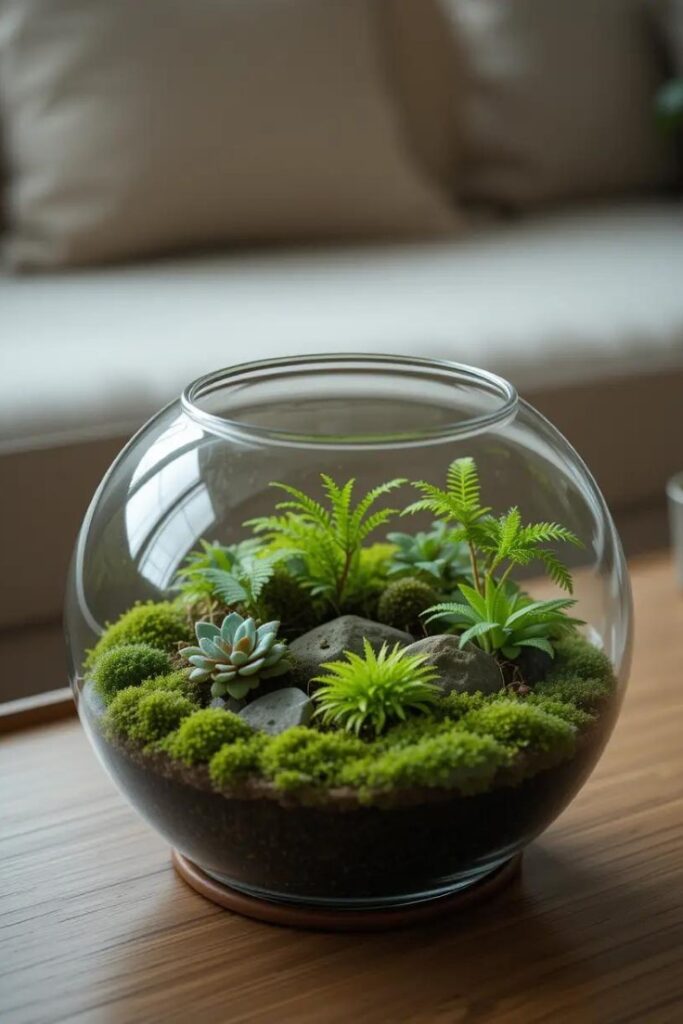
For those intrigued by miniature worlds, terrariums provide a fascinating way to incorporate apartment greenery in a controlled environment. These self-contained ecosystems can thrive in various apartment conditions with minimal maintenance.
Creating effective terrariums:
- Choose an appropriate glass container (open or closed)
- Add drainage layers with activated charcoal and pebbles
- Select plants suited for terrarium environments (ferns, moss, miniature fittonia)
- Create an appropriate soil mix based on your chosen plants
- Position away from direct sunlight to avoid overheating
Terrariums serve as living decorative pieces that work well on coffee tables, desks, or bookshelves. Their enclosed nature creates a microclimate that requires less frequent watering, making them ideal for apartments with dry air conditions. The contained nature of terrariums also means less mess and fewer pest issues compared to traditional potted plants.
7. Plant Groupings: Create Impact Through Clusters

Rather than scattering individual plants throughout your apartment, consider creating deliberate groupings of different plants. Plant clusters create visual impact while allowing you to play with varying heights, textures, and shades of green.
Effective plant grouping strategies:
- Combine plants with different leaf shapes and sizes
- Vary heights using stands, risers, or choosing plants of different growth habits
- Group plants with similar care requirements for easier maintenance
- Use three to five plants per grouping for visual balance
- Create micro-environments where grouped plants increase humidity for each other
Plant groupings can transform an empty corner, enhance a bare wall, or add interest to a dining table. When clustering apartment greenery, ensure each plant receives adequate light according to its specific needs. The collective visual impact of plant groupings often creates a more sophisticated and intentional design statement than isolated plants.
8. Bathroom Greenery: Utilizing Humid Spaces

The naturally humid environment of a bathroom makes it an unexpected yet ideal location for certain types of plants. Bathroom greenery thrives in the moisture-rich atmosphere created by showers and baths, often requiring less manual watering than plants in other rooms.
Best plants for bathroom environments:
- Boston Ferns: Love humidity and filtered light
- Peace Lilies: Thrive in bathroom conditions
- Aloe Vera: Benefits from bathroom humidity
- Orchids: Many varieties flourish in steamy conditions
- Air Plants: Can absorb moisture from humid air
Bathroom greenery can be positioned on windowsills, countertops, shelves, or even hanging from shower curtain rods (using suitable waterproof containers). Besides adding visual interest to typically utilitarian spaces, these plants benefit from the natural conditions while improving air quality in an often enclosed area. Even small bathrooms can accommodate compact plants that enhance the room’s atmosphere.
9. Seasonal Rotating Displays: Keep Things Fresh

Maintaining interest in your apartment greenery throughout the year can be achieved through seasonal plant rotations. This approach allows you to showcase different plants as the seasons change, keeping your decor dynamic and responsive to natural growth cycles.
Implementing seasonal plant rotations:
- Focus on flowering plants during spring months
- Feature lush foliage plants during summer
- Introduce plants with colorful leaf changes for fall
- Choose hardier, structural plants for winter months
- Rotate plants between different positions in your apartment based on seasonal light changes
This strategy not only keeps your apartment decor fresh and engaging but also allows you to respond to the natural seasonal needs of different plants. Seasonal rotations can be particularly beneficial in apartments with limited consistent light sources, as you can position each plant where it can thrive during its featured season.
Creating Your Apartment Greenery Plan
As you consider which of these methods might work best for your living situation, take time to assess your apartment’s specific conditions:
- Light availability: Map out which areas receive direct sunlight, indirect light, or remain mostly shaded
- Available space: Identify unused areas where plants could thrive without cluttering living space
- Your schedule: Be honest about how much time you can dedicate to plant care
- Experience level: Start with foolproof options if you’re new to plant care
- Design preferences: Consider how different plant types complement your existing decor
Remember that successful apartment greenery requires some planning but doesn’t need to be complicated. Start small with one or two approaches from this guide, then expand as your confidence and experience grow.
Questions & Answers About Apartment Greenery
What are the best plants for apartments with low light?
Snake plants, ZZ plants, pothos, and peace lilies are excellent choices for apartments with minimal natural light. These varieties have adapted to thrive in lower light conditions and can continue to grow with indirect or artificial lighting.
How often should I water my apartment plants?
Most indoor plants require watering when the top inch of soil feels dry to the touch. However, each plant species has different requirements. Generally, it’s better to underwater than overwater, as root rot from excessive moisture is a common issue for apartment greenery.
Can I keep plants in apartments with no windows?
While challenging, it’s possible to maintain plants in windowless spaces using grow lights specifically designed for indoor plants. LED grow lights are energy-efficient and can provide the necessary light spectrum for photosynthesis in the absence of natural light.
What are the most common mistakes when adding greenery to apartments?
The most frequent errors include overwatering, placing plants in inappropriate light conditions, using containers without drainage holes, and choosing plants unsuited for indoor environments. Research each plant’s specific needs before purchasing to ensure compatibility with your apartment conditions.
How can I prevent soil gnats in my apartment plants?
To prevent these common pests, avoid overwatering your plants, use well-draining potting mix, allow the soil surface to dry between waterings, and consider adding a layer of sand or small pebbles to the soil surface. Sticky traps can help catch adult gnats if an infestation occurs.
What plants are safe if I have pets in my apartment?
If you have cats or dogs, avoid toxic plants like lilies, pothos, and peace lilies. Instead, choose pet-safe options such as spider plants, Boston ferns, areca palms, and certain types of peperomia. Always research plant toxicity before introducing new greenery to a home with pets.
How can I add greenery to a rental apartment without damaging walls?
Use removable hooks, tension rods, freestanding plant stands, or tabletop displays to add plants without making permanent modifications. Over-the-door hangers and suction cup window planters also provide options that won’t damage rental property surfaces.
Is it expensive to maintain apartment greenery?
It doesn’t have to be! Start with affordable, easy-to-propagate plants like pothos or spider plants that can be expanded through cuttings. Many successful plant parents build their collections gradually by propagating from existing plants, trading with friends, or rescuing clearance plants from garden centers.
How can I increase humidity for tropical plants in my dry apartment?
Create microenvironments by grouping plants together, using pebble trays filled with water beneath plants, running a small humidifier, or misting plants regularly. Placing plants in naturally humid areas like kitchens and bathrooms can also help tropical varieties thrive.
What should I do with my apartment plants when I go on vacation?
Before leaving, water your plants thoroughly, move them away from direct sunlight, group them together to create humidity, and consider self-watering devices or asking a friend to check on them. For longer absences, temporary plant-sitting services are available in many cities.

